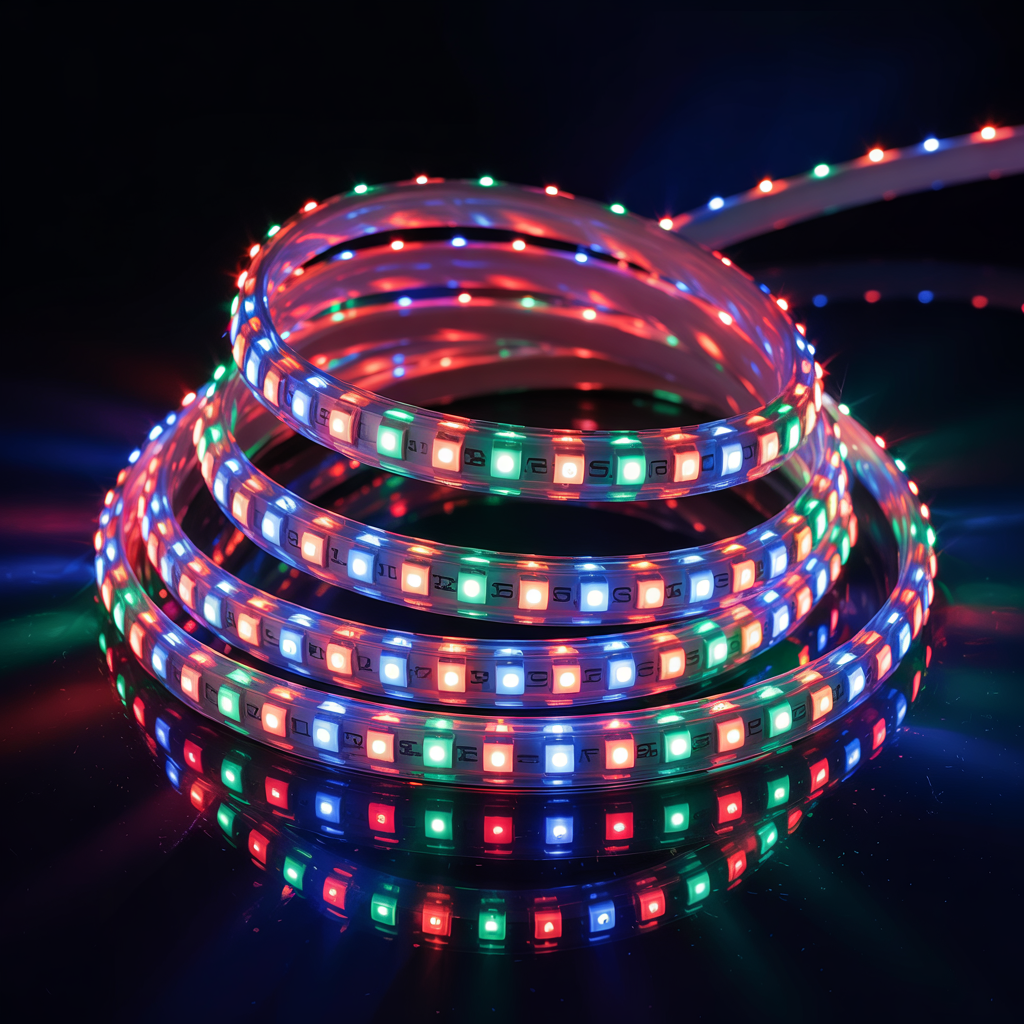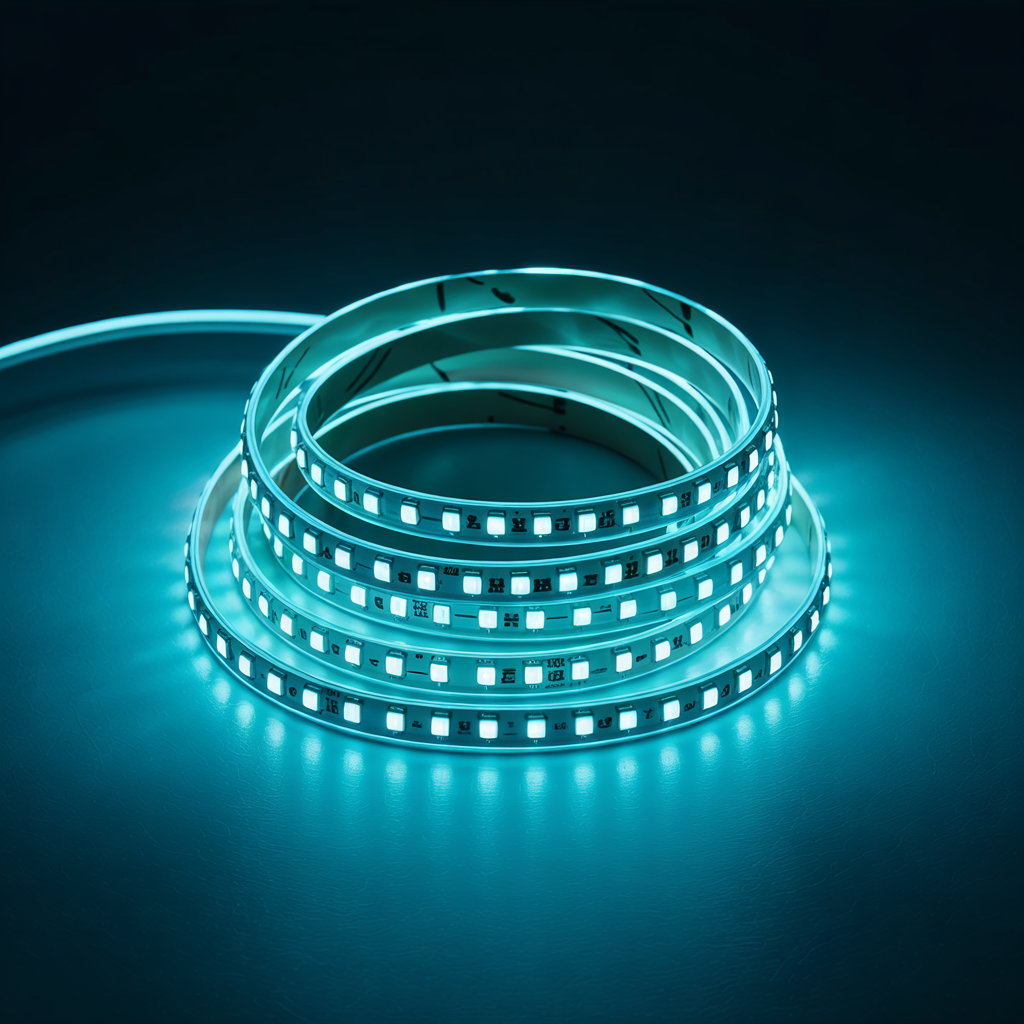How to Wire LED Stripe Lights? A Comprehensive Guide
Want to add a touch of brilliance to your home or project? LED strip lights are a fantastic option, offering versatility and energy efficiency. But how to wire LED stripe lights can seem daunting if you’re not familiar with basic electrical work. This comprehensive guide will walk you through every step, from understanding the components…
Want to add a touch of brilliance to your home or project? LED strip lights are a fantastic option, offering versatility and energy efficiency. But how to wire LED stripe lights can seem daunting if you’re not familiar with basic electrical work. This comprehensive guide will walk you through every step, from understanding the components to safely completing the installation. We’ll cover different types of LED strips, power supplies, connectors, and troubleshooting tips, ensuring you’ll feel confident in your ability to illuminate your space. Let’s dive in!
How to wire LED stripe lights? Connect the LED strip’s positive (+) and negative (–) wires to a compatible LED power supply. Match voltage ratings. Secure connections with solder or clip-on connectors. Plug the power supply into an outlet. Use a controller if needed. Ensure polarity and wattage are correct to avoid damage.
LED strip lights are flexible circuits containing multiple small LED lights. These are commonly used for accent lighting, backlighting, and decorative purposes. They come in various lengths, colors (single color, RGB, RGBW), and brightness levels. Their flexibility allows them to conform to various shapes and surfaces.
How to wire LED stripe lights?
Types of LED Strip Lights

There are several types, categorized by their voltage and application:
-
- 12V LED Strips: These are the most common and require a 12V power supply. They are generally safer and easier to work with than 24V strips.
- 24V LED Strips: Offer higher power output and are suitable for longer runs or higher power applications. They can be more challenging to work with due to higher voltage.
- Single Color LED Strips: Emit only one color (e.g., warm white, cool white, red, green, blue).
- RGB LED Strips: Combine red, green, and blue LEDs, allowing for a wide range of color mixing controlled by a controller.
- RGBW LED Strips: Add a white LED to RGB strips for increased brightness and a more natural white color.
Read More: How to Recycle LED Light Bulbs? (A Complete Discussion)
Essential Components for Wiring LED Strip Lights

Power Supply
A crucial component is a power supply that matches the voltage of your LED strip lights (12V or 24V). The power supply’s amperage (measured in amps or A) must be sufficient to power the total length of your LED strip. Underpowering leads to dimmer lights, while overpowering is generally safe but wasteful.
LED Strip Light Connectors
These connectors simplify wiring and allow for easy connection and disconnection of the strips. They are available in various types, including solderless connectors, crimp connectors, and wire leads.
Wire
Suitable gauge wire is necessary to carry the current required by the LED strip. Thicker wires (lower gauge numbers like 18 AWG or 16 AWG) can handle more current and are generally recommended for longer runs.
Read More: 15 Exposed Basement Ceiling Lighting Ideas That Transform Your Space
Planning Your LED Strip Light Installation
Measuring and Cutting LED Strip Lights
Accurately measure the length required. Most LED strips have cutting points indicated every few inches or centimeters. Cutting outside these points can damage the strip.
Choosing the Right Power Supply
Calculate the total power consumption of your LED strips. Each strip’s packaging usually lists its power consumption per meter (or foot). Multiply this by the total length to get the total wattage. Then, choose a power supply with slightly higher wattage for a safety margin.
Wiring LED Strip Lights: Step-by-Step Guide
Preparing the LED Strip Lights
Before connecting, carefully inspect the strip lights for any damage. If using a pre-made connector, simply attach it. If soldering, apply solder to the designated points. Ensure all connections are secure.
Connecting to the Power Supply
Connect the positive (+) and negative (-) wires from the power supply to the corresponding wires on the LED strip or connector. Double-check the polarity to avoid damaging the strip.
Mounting and Securing LED Strip Lights
Use appropriate adhesive backing or clips to secure the strip lights to the desired surface. Ensure the adhesive is clean and dry for best adhesion.
Read More: Can LED Lights Burn Out? A Comprehensive Guide
Troubleshooting Common Issues
LED Strip Lights Not Turning On
Check connections, power supply, and fuses. The most common cause is an incorrect connection, loose wire, or a blown fuse.
Dim LED Strip Lights
This often indicates an underpowered supply. Use a multimeter to measure the voltage at the strip lights, and check if the power supply meets the requirements.
Flickering LED Strip Lights
Flickering could result from loose connections, insufficient power, or electrical interference. Check all wiring and ensure a clean and stable power source.
Safety Precautions
Working with Electricity
Always disconnect power before working with electrical wiring. Use appropriate safety equipment like gloves and insulated tools.
Avoiding Overheating
Ensure adequate ventilation around the LED strips, especially in enclosed spaces. Overheating can damage the LED strips and pose a fire risk.
Choosing the Right Gauge Wire
Using thin wire for high-current applications can lead to overheating and potentially fire hazards. Always select a wire gauge appropriate for the amperage of your LED strips.
Different Applications of LED Strip Lights
Ambient Lighting
Create a soft, relaxing glow with LED strips in bedrooms, living rooms, or hallways.
Accent Lighting
Highlight architectural features or artwork using strategically placed LED strips.
Under-Cabinet Lighting
Enhance kitchen workspaces with bright and energy-efficient LED strips under cabinets.
Benefits of Using LED Strip Lights
Energy Efficiency
LEDs consume significantly less energy than traditional incandescent bulbs, leading to lower electricity bills.
Long Lifespan
LEDs have a much longer lifespan than incandescent or fluorescent lights, reducing replacement costs.
Versatility
Their flexibility allows for installation in various locations and shapes, providing creative lighting options.
Limitations of LED Strip Lights
Heat Sensitivity
LED strips can overheat if not properly ventilated, shortening their lifespan.
Voltage Sensitivity
Using incorrect voltage can damage the LED strips and their components.
Brightness Variations
Brightness can vary along the length of the strip due to manufacturing tolerances.
Comparing LED Strip Light Brands and Models
Various brands offer diverse features and quality. Research reviews to determine the best choice based on your needs and budget.
Advanced Wiring Techniques
Using a Controller for RGB LED Strips
An RGB controller allows you to change colors and patterns of RGB LED strips. Connect the controller to the power supply and the LED strips according to the manufacturer’s instructions.
Creating a Complex Lighting Setup
For larger projects involving multiple LED strips and zones, consider using a dedicated lighting control system.
Frequently Asked Questions
What type of adhesive is best for LED strip lights?
Double-sided adhesive tape is commonly used, but ensure it’s rated for the surface and temperature. For more secure mounting, consider clips or channels specifically designed for LED strips. Always test the adhesive on an inconspicuous area first.
Can I connect multiple LED strips together?
Yes, but ensure the combined wattage doesn’t exceed the capacity of your power supply. Use suitable connectors and consider the voltage drop across longer runs. For longer runs, using a higher voltage strip might be necessary or adding more power supplies.
How do I determine the correct amperage for my power supply?
Each LED strip specifies its power consumption per meter (or foot) in Watts. Divide the total wattage by the voltage (12V or 24V) to find the amperage. Always select a power supply with a slightly higher amperage rating than calculated for safety.
What happens if I connect the LED strip lights incorrectly?
Incorrectly connecting the positive and negative wires can damage the LED strip and potentially the power supply. Always double-check the polarity before connecting.
Can I use waterproof LED strip lights outdoors?
Yes, but only if they are specifically rated for outdoor use and protected from direct exposure to rain, moisture, or extreme weather conditions.
Final Thoughts
Wiring LED strip lights can be a rewarding DIY project that transforms your living space. By carefully following the steps outlined above and understanding the key components and safety precautions, you can create stunning lighting effects. Remember to choose the right components, carefully plan your installation, and double-check all connections before powering the system. Whether you’re adding a subtle glow to your living room or creating a vibrant display, the possibilities are endless. With a bit of knowledge and attention to detail, you can easily illuminate your world with the beauty and efficiency of LED strip lights.

